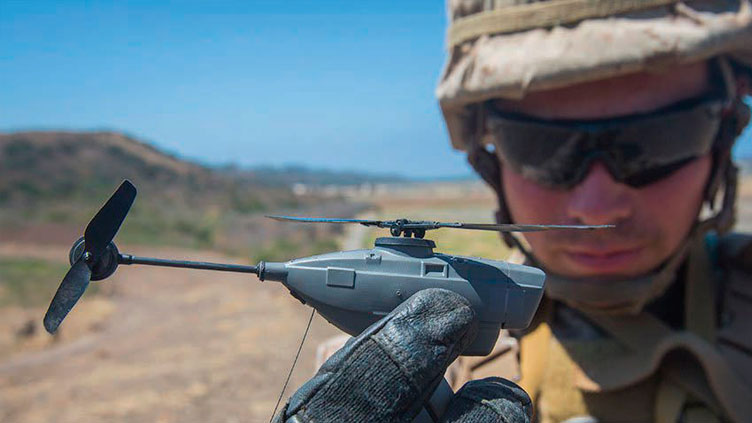
Unmanned Aerial Vehicles (UAVs) have been used in the military for years but there is still much more capability this technology can deliver as it develops.
UAV use in the military
In defence a platform’s size, weight and power are all important factors. Increasingly, industry is looking to decrease size and weight whilst increasing power – something that used to be a lot harder to achieve as power traditionally would have a knock-on effect to either size, weight, or both. If we look at technology such as the Black Hornet Nano, we can see examples of how technology can be smaller and greatly increase tactical options and effectiveness.
The Black Hornet manifests the miniaturisation of traditional technology such as helicopters that can reach places human or larger-sized platforms never used to be able to get to, creating the ability to safely identify enemy positions or hidden dangers.
However, current use of UAVs in the military still leaves a lot to be desired. The technology can be more costly than the civil markets and the rate of destruction or loss of assets is significantly higher in the military making their continued use and replacement a lot more costly.
Interestingly, the Black Hornet has already left service in the UK but has won recent investment from the US.
UAVs can play a substantial role in the future for defence through their integration in military aircraft and the overall effectiveness they offer. That being said, defence can learn a lot about the effective use of these technologies from civil aerospace and if they do, it could lead to cheaper and more efficient usage in the military.
What can civil UAVs teach defence?
As previously stated, civil UAVs are cheaper to buy and to operate than military platforms, as market demand and accessible design has contributed to rapid growth in the industry. These factors offer the defence industry the chance to more widely consider the use of these cheaper and easier drones for operations. Potentially leading to drastically different ways of performing military tasks and maintaining, or not, fleets of more disposable systems.
If the Army, RAF and Royal Navy all had access to an increased number of cheaper and easier drones the possibility for surveillance and protection of vital assets increases tenfold. UAVs will undoubtedly be used to protect the new Queen Elizabeth II carrier in the future, carrying out surveillance of the surrounding oceans and feeding that information back to the ship or even to other airborne assets.
As an industry we should be looking for more of these innovative ways to solve challenges in defence with an aim of improving efficiency, cost and precision.





